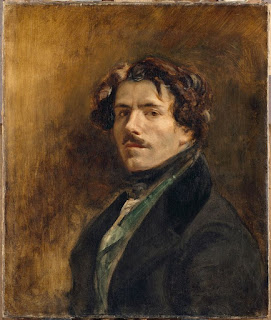Museum Tech For The Ages
Museum Tech For The Ages
Walk with dinosaurs. Fly to Mars. Discover ancient cultures. A visit to the museum brings nearly endless opportunities to experience our universe. Worlds from the past, present and future are brought to life with the help of time-perfected practices and groundbreaking technology.
So, how do they make an already awe-inspiring experience even more awesome? With some help from hi-technology, this multi-billion dollar industry is taking us places we’ve never been to before in ways we never thought possible. And it’s really, really cool.
Augmented Experiences
Museums are always searching for ways to spice up exhibitions and makes things more interesting for visitors. And a multitude of technologies are being applied in a variety of ways to achieve this—from 3D printing and scanning to virtual reality and app-guided tours. Apps like Explorer can make it easier to navigate large collections at the American Museum of Natural History. Explorer uses hundreds of Bluetooth hotspots to create a customized experience and helps users discover artifacts that might interest them the most.
Want to walk through a human heart? Or get a better understanding of the aftermath of a disaster like Chernobyl? The Franklin Institute in Philadelphia offers a virtual walkthrough of such sites using an augmented reality headset at their VR stations. The institute has also created a new room-scale VR zone where you can encounter a blue whale, tour the solar system and take a look inside the human brain. Both augmented reality adventure sites use VR technology to provide a completely immersive experience in environments that can be explored and interacted with like never before.
Mobile Museum-ing
Recently, The Met made hi-tech spectating available for art appreciators everywhere by digitizing over 450,000 images from its collection. Now, each of these pieces is available for download onto any computer, anywhere in the world.
Diving even deeper into virtual institutions, the Smithsonian’s National Museum of Natural History offers a complete virtual tour of the entire museum from the comfort of your own computer. Complete with 360-viewing, zoom features and an orientation map, you can still get lost in time with just a click and a scroll.
A Watchful Eye
The interactive aspect of museum experiences is also becoming reciprocal: Now, humans aren’t the only onlookers at an exhibit, in a way, the museum is watching you, too. Eye-tracking technology is being used to see what you’re watching. By monitoring where your eyes go on art pieces, museums are able to gather data about what you look at, the direction of your gaze and how long you look at a particular point.
Why is this information useful? It’s all in the name of science. One notable study at the Van Gogh Museum in Amsterdam questioned whether our eyes are driven by core qualities like color, shape and contrast, or by our previous knowledge, expectations and intentions of the painting. Beyond that, they wanted to know if there was a difference between how adults and children view art in these respects. With some help from Pupil labs and their mobile eye tracker, scientists were able to deduce that adults view paintings with a purpose, while children are more drawn to the core qualities.
Museums Moving Forward
When it comes to museums, bringing in the new with the old is proving to boost attendance and turn heads worldwide. Technology will only continue to advance, allowing us to uncover even more historic marvels and showcase them in even more interactive ways. One can only hope that the resulting harmonies will convert even the most apprehensive museum visitors into eager art enthusiasts.
This article is for educational purposes only, and is not intended to provide medical or legal advice, or to indicate the availability or suitability of any product or service for your unique circumstances.
Capital One does not provide, endorse, or guarantee any third-party product, service, information or recommendation listed above. The third parties listed are solely responsible for their products and services, and all trademarks listed are the property of their respective owners.
Kind regards ; https://art-pierre.college
Kind regards ; https://art-pierre.college
 iStock
iStock


Comments
Post a Comment
Thank you for your response
Kind regards Pierre